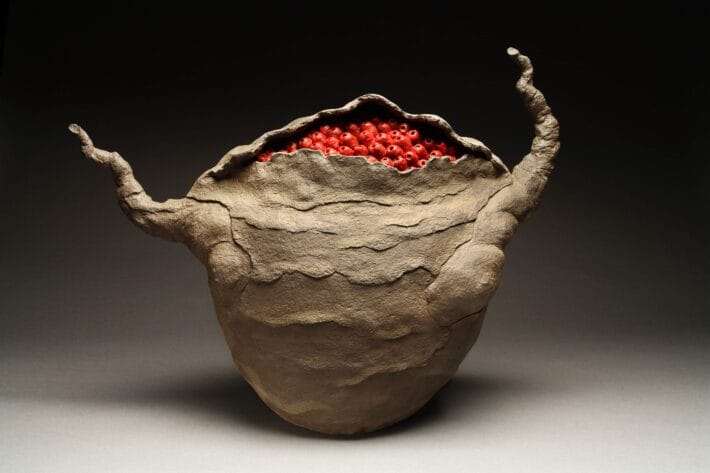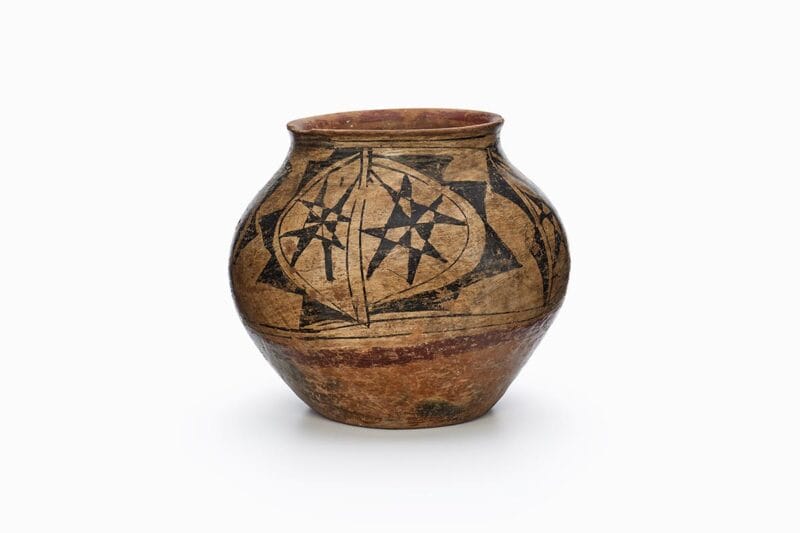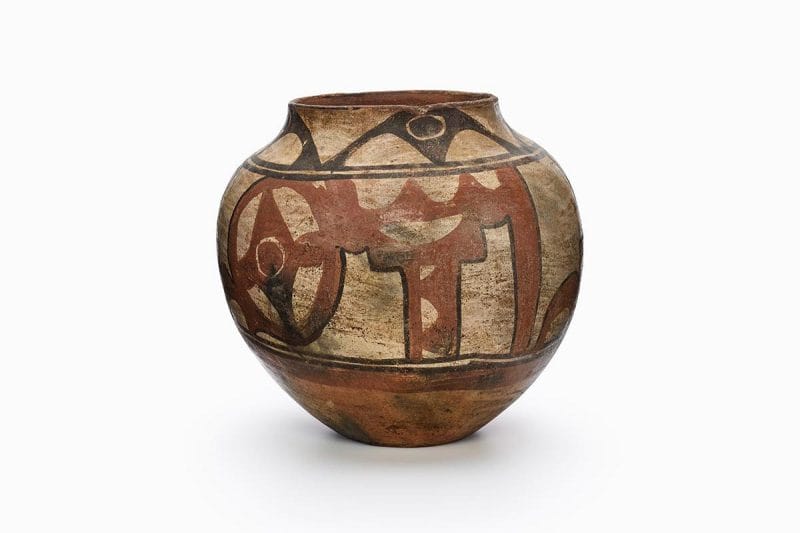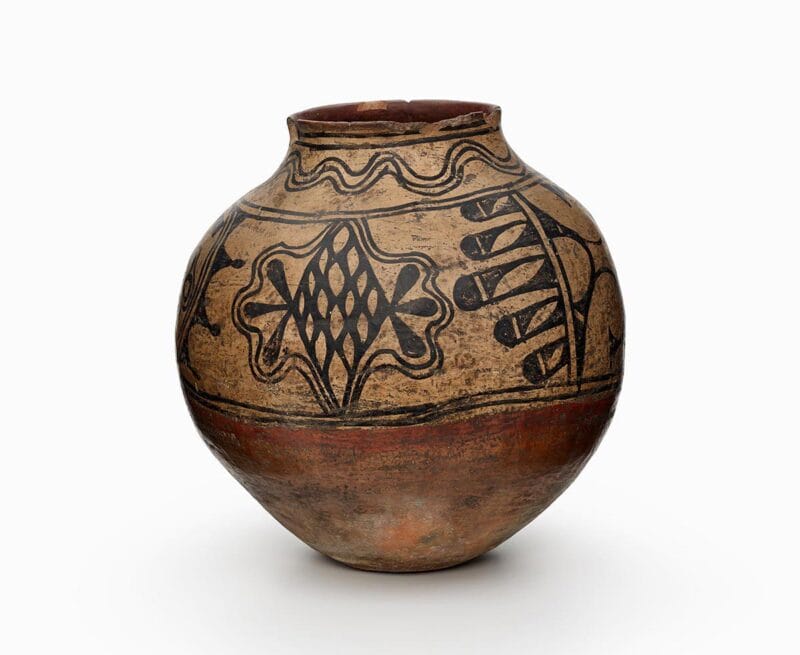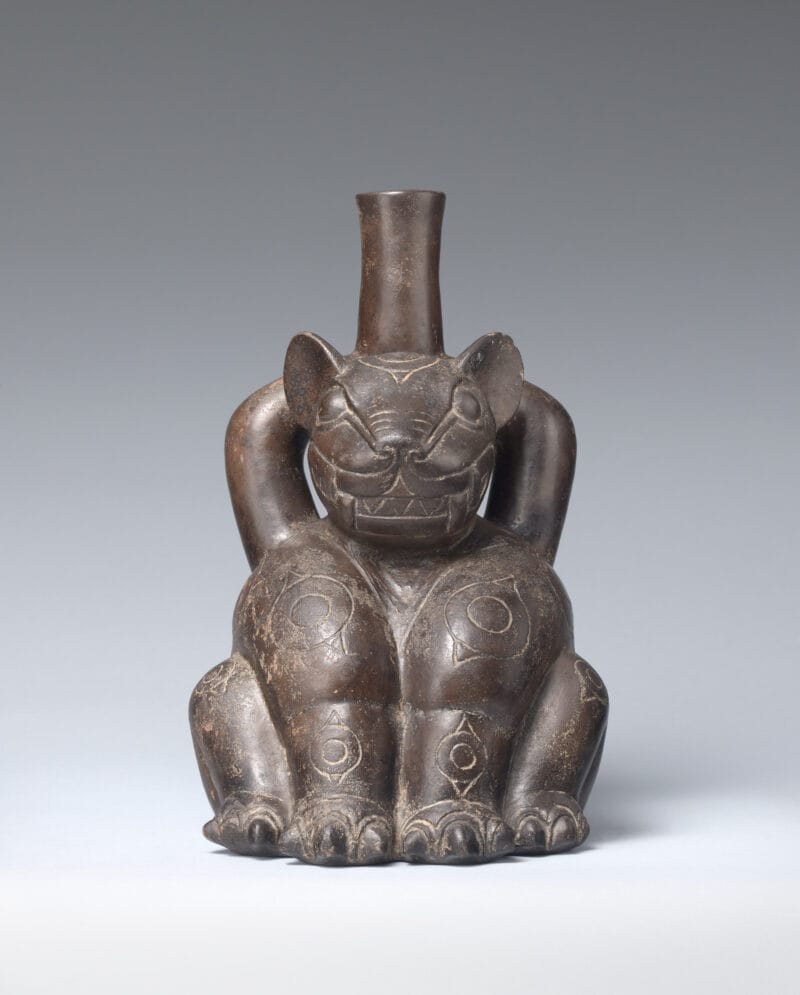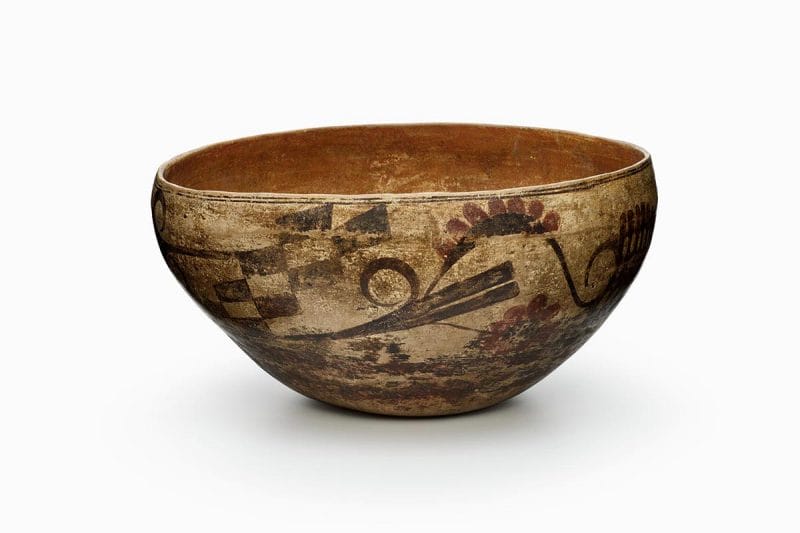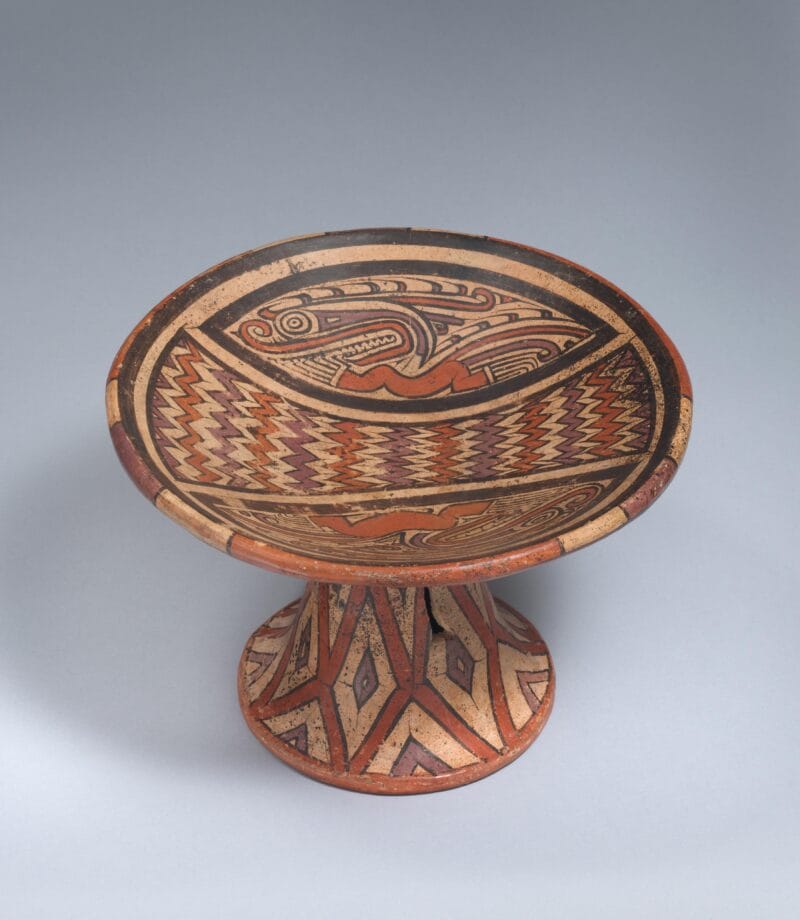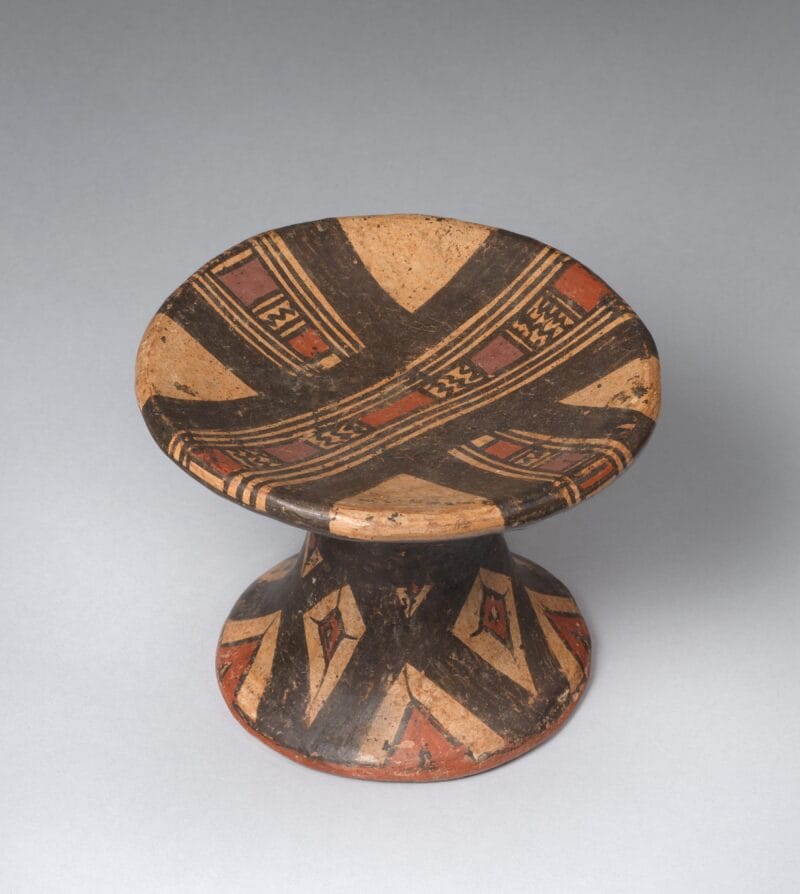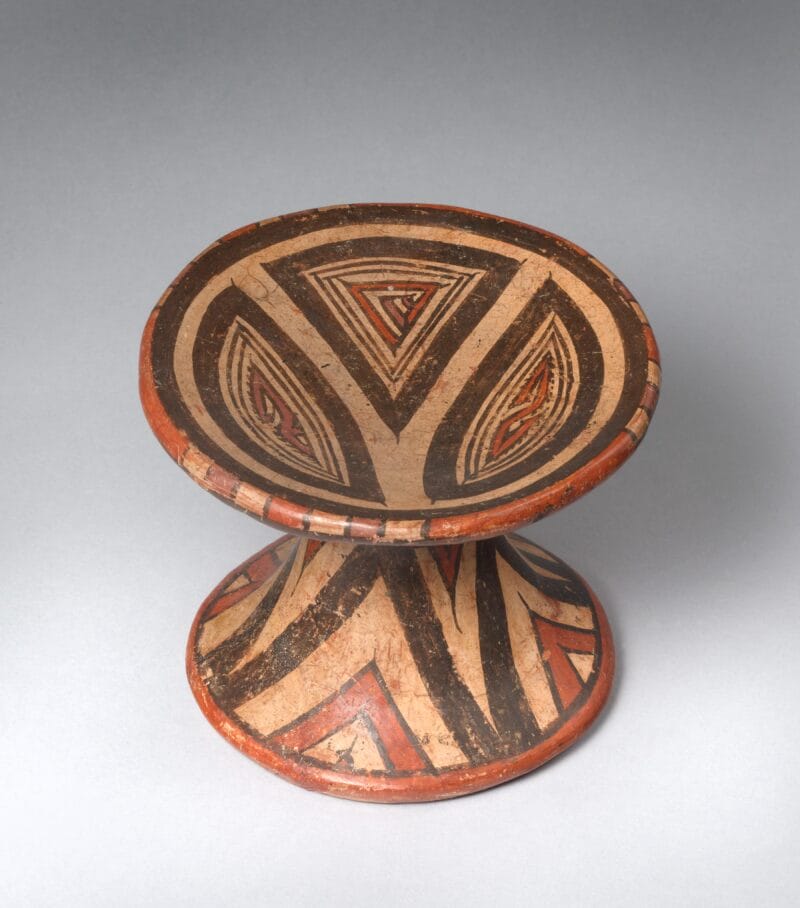
About the Object
Coclé-style stem plates often originate from the Maracaras District near the Pacific coast of Panama. The example seen here appears as a dancing shaman blending human and crocodile or iguana features. This headdress-wearing figure is surrounded by lines in the back that represent stingray spines. Together, these elements were seen to show the relationship between people and nature.
Additional Information
While vessels like this were primarily used to store and serve fruit, different scholars suggest that forms of this style may also depict ideas concerning ethnicity, social differences, or even beliefs about creation and one’s place in the universe. The relationship between people and the environment depicted in this vessel was so valued because it was seen as the key to helping people survive and thrive in the tropical environment.
Delefaille Collection, Brussels, Belgium, 1980s;
[Throckmorton Fine Art, New York, NY];
The Jan T. and Marica Vilcek Collection, 2002-2010;
Gift to The Vilcek Foundation, 2010;
Related Objects
You may also be interested in
Vilcek Foundation supports “Grounded in Clay: The Spirit of Pueblo Pottery”
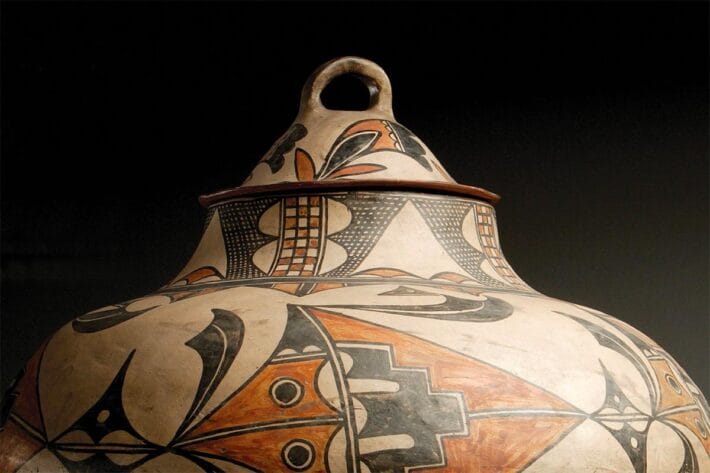
Ryo Toyonaga: Mephistophelean
